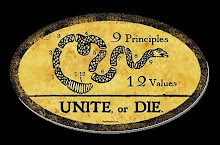 A recap and continuation from my earlier post...
A recap and continuation from my earlier post...Forty-five years ago, on Nov. 22, 1963, at exactly 12:30 p.m., the course of American history was forever changed when shots rang out in Dealey Plaza on the western edge of downtown Dallas.
President John F. Kennedy, the 35th president of the United States, was struck multiple times as he rode in a motorcade through the city along with his wife, Jackie. Kennedy died as a result of his wounds, and a historic presidency died along with him. JFK was the youngest person ever elected president, the first and only Roman Catholic, and the fourth to die from an assassin's bullet.
In 2003, on the 40th anniversary of the event, ABC news conducted a poll that found 70 percent of Americans believe JFK's assassination was the result of a conspiracy.
Hundreds of books and films have come out over the years examining every possible scenario and piece of evidence, some claiming Lee Harvey Oswald's guilt, others his innocence. Despite the crime having been committed 45 years ago, new evidence continues to come to light -- some as recently as this year.
Oswald, a 24-year-old worker at the Texas Schoolbook Depository, was arrested the day Kennedy was killed and charged with killing Kennedy and a policeman, J.D. Tippit. Oswald himself was killed two days later when he was shot on national television in the basement of the Dallas police headquarters by Jack Ruby, a Dallas nightclub owner with suspected ties to organized crime. Oswald denied involvement in Kennedy and Tippit's deaths to the end.
Even the federal government cannot make up its mind. In 1964, the Warren Commission, which was assigned the duty of investigating the assassination by President Lyndon Johnson, concluded that Oswald was the lone assassin. In 1979, the House Select Committee on Assassinations concluded that there was a probable conspiracy and more than one gunman.
Perhaps nothing brought more attention and focus to the JFK assassination over the past few decades than Oliver Stone's landmark 1991 film "JFK." Featuring a star-studded cast that included Kevin Costner, Tommy Lee Jones and Jack Lemmon, the film chronicled the story of New Orleans District Attorney Jim Garrison's prosecution of businessman Clay Shaw for participating in a conspiracy to kill Kennedy.
The film proposed the theory that Lyndon B. Johnson, the FBI, the CIA, the Mafia and military intelligence participated in a coup d'etat to kill Kennedy by using Oswald as the patsy. Shaw was acquitted of the charge in 1969, but the film portrayed him as guilty. To this day Shaw is the only person ever tried in a court of law in connection with the assassination.
The film was extremely controversial but was a box office hit, won two Academy Awards and was nominated for Best Picture. The film polarized critics, both for its filmmaking style and presentation of the facts.
In the film's most memorable scene, Costner, portraying Garrison, re-enacts what has come to be called the
"magic bullet"
theory, which was the cornerstone of the Warren Commission's conclusion that Oswald acted alone. Watching the scene, it is difficult not to conclude that the magic bullet was scientifically impossible.
After the shooting, Dallas police officers discovered a rifle that was hidden near a windowsill of the sixth floor of the Texas Schoolbook Depository, which overlooked Dealey Plaza. The rifle was registered to Oswald.
The assassination was captured on film by Abraham Zapruder, and because of the time it takes to fire off a round from Oswald's rifle, most experts agree that it would have only been possible for three shots to have been fired from it. Conspiracy theorists have struggled for years to prove the existence of a fourth shot, because four shots proves a conspiracy.
One shot has been proved to have missed Kennedy's car entirely, and another was the fatal head shot. That left one bullet to do the rest of the damage -- seven wounds, including entrance and exit wounds -- to Kennedy and Texas Gov. John Connelly, who was seated in front of the president.
But in 2003, the theory was re-examined in the ABC documentary, "The Kennedy Assassination: Beyond Conspiracy." In it, ABC correspondent Dale Meyers created a digital computer simulation
of the Zapruder film within a three-dimensional, scale model of Dealey Plaza, and was able to leave the place where Zapruder was filming and examine the shooting from any angle.
Still, many researchers continue to believe in a conspiracy. Even if the single bullet theory is correct, it does not mean Oswald fired it, and it does not mean another shot didn't come from the grassy knoll. Oswald always maintained that he was on the second floor in the lunchroom at the time of the shooting and was seen there by a Dallas policeman 90 seconds after the shots were fired.
New pieces of possible evidence continue to be released. In February, Dallas District Attorney Craig Watkins unveiled the contents of a safe that had been secret for more than 40 years. Inside was clothing worn by Oswald, a leather holster belonging to Ruby and piles of old documents.
Among them was an alleged transcript of a recording between Oswald and Ruby at Ruby's nightclub where they plot to kill Kennedy. Some researchers have concluded it to be part of a movie script, and a bad one at that. Still, the fact that it remained locked away in a safe on the 10th floor of the Dallas County Courthouse for decades is intriguing.
But more intriguing, and less easy to dismiss, was a letter from the FBI to the Dallas police chief stating that Ruby's sister said her family had obtained a police report on the preparations for Kennedy's visit to Dallas.































No comments:
Post a Comment